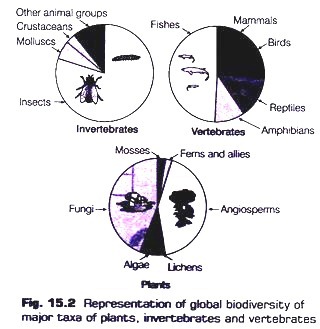Enzymes are soluble, colloidal, organic catalyst formed by living cells that catalyze a specific biochemical reaction by lowering the activation energy and in the process they remain unchanged.
Enzymology deals with the study of Enzymes.
Synonyms:
Enzymes are also known as organic catalysts, Mocatalysts, cell ferments, bio-regulators, catalysts of life or “agents of life”.
Types of Enzymes:
i. Exo-enzymes:
Enzymes that function outside the cell are called so, e.g. zymase, lysozyme, digestive enzymes.
ii. Endo-enzyme:
Enzymes that function inside the cell are called so, e.g. enzymes of glycolysis, Krebs cycle, protein biosynthesis etc.
iii. Zymogens:
These are inactive precursors or pro-enzymes forms of exo-enzymes. They become activated prior to enzymatic action, e.g., proteases.
iv. Constitute or housekeeping enzymes:
Those enzymes are always present and synthesized in cell, e.g., glycolytic enzymes.
v. Inducible enzymes :
Most enzymes are synthesized only when they are needed e.g. Nitric oxide synthase, cycloxygenase, aldehyde dehydrogenase etc.
vi. Isoenzymes (isozymes):
These are the different forms of the same enzymes which catalyze the same chemical reaction but, differ each other chemically, immunologically, and electrophoretically and in kinetic properties. For example, in maize 18 isozymes found for peroxidase. In plants aspertate kinase exist in two isozyme forms. Aspertate kinase catalyzes the amino acid biosynthesis from aspertate, LDH (Lactic acid dehydrogenase)
vii. Ribozyme or RNA Enzymes:
e.g. ribonuclease-P (RNAase-P), Peptidyl transferase (23S rRNA of larger subunit of ribosome) etc.
viii. Abzymes:
These are the antibodies that act as enzymes.
Structure (Chemical Nature) of Enzyme:
All enzymes are generally globular proteins except some RNA enzymes like Ribonuclease-P, ribozyme and peptidyl transferase.
On the basis of number of polypeptide chains, enzymes are of 2 types:
(a) Monomeric enzymes:
Consist of one polypeptide chain (subunit), e.g., ribonuclease, lysozyme, hexokinase etc. These are functional in their 3 dimensional or tertiary structures.
(b) Oligomeric enzymes:
Consist of more than one oolypeptide chain. They are functional in their quaternary structure. For example, aldolase consists of 4 chains (tetrameric), Rubisco of Calvin cycle consists of 24 chains, and Enolase is a dimmer.
On the basis of chemical nature, enzymes are also 2 types:
(i) Simple enzymes:
They consist of only proteins, e.g. urease, lysozyme, pepsin, trypsin etc.
(ii) Holoenzyme or Conjugate enzyme:
These enzymes consist of proteinous part called apoenzyme and non-proteinous part called co-factor.
Holoenzyme = Apcenzyme + Co-factor (active) (Proteinous part) (Non-proteinous part). The cofactors are of 3 types: Co-enzymes, Prosthetic groups and inorganic ions.
Catalytic Site or Active Site or Active Spot:
It is a small three-dimensional (3D) area on or near enzyme surface that binds the specific substrate(s) and convert into products. The unique 3D shape of a catalytic site may alter by denaturation (unfolding) through high temperature or exposure to extremes of pH. This results in the loss of catalytic activity.
In monomeric enzymes, the catalytic site is often a cleft or crevice, but in multimericenzymes, it resides at the interface between polypeptides. In some enzymes, the catalytic site is rigid or non- flexible to accommodate a substrate. But in most cases, the binding of substrate induces a conformational change in the catalytic site, e.g., glucose (substrate) induces a conformational change of hexokinase. An enzyme may have one or more active sites. Each active site consists of 3-12 amino acids that come together by folding of polypeptides. In a holoenzyme, the catalytic site also contains cofactor for its function.
The amino acids residues of catalytic site lave 4 roles:
(i) Provide charged R-groups to attract substrate,
(ii) Some act as template for holding substrate,
(iii) Some provide functional groups that perform chemical changes by lowering activation energy
(iv) A few residues determine substrate specificity
Enzymes : Amino Acid residues in active site
Pepsin : Tyrosine only
Aldolase : Glycine – Histidine – Alanine
Allosteric Sites:
These are special sites on enzyme surface other than catalytic site, which when bind with effectors or modulators alter the conformation of the catalytic site. The enzymes having allosteric sites are called allosteric enzymes. Allosteric sites are of two types: activator site and inhibitor site. An allosteric activator when binds to activator site increase the enzyme activity while an allosteric inhibitor decreases the enzyme activity by binding the inhibitor site.
Enzyme Classification:
The International Union of Biochemistry (IUB, 1961) adopted a scheme for systematic functional classification and nomenclature of enzymes.
The recommendations of IUB are as follows:
(i) All known enzymes have been grouped into six major classes on the basis of reaction type they catalyze,
(ii) Each class further sub-divided into subclasses and sub-subclasses,
(iii) Each enzyme is assigned two names i.e., recommended (trivial) name and systematic name,
(iv) Each enzyme is identified by a unique four digit classification number.
For example, hexokinase is recommended name, its systematic name is glucose phosphotransferase and its classification number in EC 2.7.1.1. Here, “EC” stands for Enzyme commission, the first number (2) stands for the major class, the second number (7) stands for the sub class, the third number (1) indicates sub-class and the fourth number (1) denotes the serial number assigned in its sub-classes.

